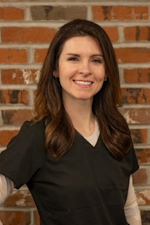Life beyond the (hygiene school) ivory tower: Strategies to get back to a confident standard of care
Imagine starting a new job. You’re excited about the new office and opportunity. Things are in full swing, and working feels more comfortable.
However, at some point there may be a realization that this is not what you expected. The stress of completing what often seems like an endless task list for each patient while staying on time starts to feel unsettling and like it could cause burnout.
Time is the biggest enemy for a hygienist. Many hygienists face challenges in their offices but feel too rushed during the day and too tired or defeated to recommend changes. When students graduate and are ready to start working as hygienists, it is impossible to imagine cutting corners, not probing, not prediagnosing, or skimming over disease. In hygiene school, or the “ivory tower,” everything was held to the highest standard. Sure, we had challenges, but the appointments were four hours!
Related reading
We all want to deliver the best treatment for our patients. Unfortunately, many appointments fall short of that ivory tower, which leads to a diminished standard of care, creating forgetfulness in technique and performance. This can happen due to the structure of the hygiene department. Here are a few common problems:
- Hygiene appointments are shortened to allow for maximum daily appointments.
- Assisted hygiene is attempted without a plan.
- Additional tasks are added to appointments without proper training, slowing the hygienist and creating a stressful workday flow. As a result, hygienists become lax and routine tasks that make up the standard of care are often forgotten.
Time constraints lead many hygienists and patients to think, “I wish we could skip the periodontal probing!” However, in order to follow the standard of care, it must be done. A dental hygienist is independently responsible for the care that is given and the standard that is followed. The American Dental Hygienists’ Association (ADHA) outlines six standards of care expectations for the dental hygienist.1 Here are the standards that go forgotten most often.
Patient history
This standard involves the initial data collection phase, and it is important to gain the proper information to identify the patient’s needs.1 This assessment takes the majority of the initial appointment. The hygienist is responsible for gathering health, social, medical, and pharmacologic histories. Situations that could arise include:
- The patient arrives late (even five minutes can throw off an appointment).
- The patient takes 15–20 minutes to complete paperwork.
- A chaotic day causes the busy business team to neglect alerting the clinical team that the patient has arrived.
Between the hour appointment limit and the initial data collection taking the bulk of the appointment, time is not your friend! One strategy for coping with the above scenarios is simply to control what you can. For example:
- Ask the patient to come into the treatment room to discuss changes and updates.
- Talk less, listen more.
- Control the conversation and make the updates with the patient as opposed to having them fill everything out.
Clinical data collection
In this standard, radiographs are taken or updated, the oral cancer screening is performed, periodontal charting is completed, and dental charting is done. This process is the start of the dental hygiene diagnosis, and each part of the initial assessment is needed in order to make a full diagnosis.1
One critical assessment that many hygienists and dentists overlook or minimize is the screening process for oral cancer. Again, time is the issue. Steps, or sometimes the entire screening, are forgotten. The patient has no idea if this was done or not. If we do not have a checks and balances system, the screening becomes easier to forget and steps are skipped.
When a patient comes in for a six-month recare and exam, both the hygienist and dentist should complete an oral cancer screening (OCS). A thorough extra- and intraoral screening adds value to the appointment, and the patient will feel more taken care of. Patients might say, “I have never had this done before.” Remember our role is in preventing oral cancer and saving lives.
Take these five steps to elevate your oral cancer evaluation:
- Let the patient know why you are doing the extra- and intraoral evaluation. You are not just looking for lumps and bumps; you are feeling their lymph nodes and looking for tissue changes.
- Make a habit of completing the exam the same way each time.
- Give a verbal rundown of your findings when the doctor comes in to do the exam in front of the patient.
- Create a checks and balances system by making sure the doctor performs the exam as well.
- Avoid minimizing language such as “lumps and bumps” and “just taking a quick peek.”
Another clinical challenge for hygienists is completing a full periodontal chart. Sometimes there is no one to help chart and technique can become compromised. This results in deeper pockets being missed and the potential for periodontal disease to go untreated. One immediate solution could be discussing this at the huddle. “Mrs. Jacobs needs a full-mouth probing. Who can help me chart at 10 am?” Identify a team member who can help at that specific time. Another tip to ensure the hygiene team is using the proper technique is to calibrate. If the team doesn’t spend time calibrating their technique, readings and the diagnosis will fluctuate.
Schedule time to calibrate, then:
- Gather the probes and make sure that each clinician is reading them the same way.
- Observe each clinician’s technique.
- View a technique video, which may be helpful to see the proper angulation and pressure needed to gain an accurate reading.
- Practice on each other and offer constructive advice.
- Common mistakes when probing include:
- Not reading the correct measurements
- Not walking the probe along the gingival margin
- Not keeping the probe inserted in the gingiva and overangulation
For large and small hygiene departments, monthly meetings are essential to keep skills sharp and on point. Offices that practice calibration and have regular team meetings experience great success in their improved techniques and nonsurgical periodontal programs.
Go for the gold (standard)
Work as a team to make certain that sufficient time is allowed for each patient to meet the gold standard of care. Make sure you are using your time with patients efficiently. Keep your skills sharp, attend hands-on courses, and hold yourself accountable for the care you give.
Editor's note: This article appeared in the August 2022 print edition of RDH magazine. Dental hygienists in North America are eligible for a complimentary print subscription. Sign up here.
Reference
- American Dental Hygienists’ Association (2016). Standards for clinical dental hygiene practice. https://www.adha.org/resources-docs/2016-Revised-Standards-for-Clinical-Dental-Hygiene-Practice.pdf







